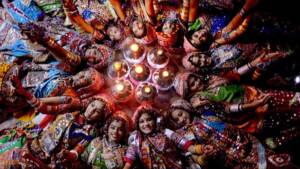How Navratri is Celebrated Across India: A Cultural Tapestry
Navratri, one of the most vibrant and culturally rich festivals in India, is celebrated with immense enthusiasm and fervor across the country. The festival, which spans nine nights and is dedicated to the worship of the goddess Durga, is marked by diverse traditions, rituals, and celebrations in different regions of India. This blog explores how Navratri is celebrated across India, highlighting the unique customs and practices that make this festival a true reflection of India’s cultural tapestry.
RX REJUVENATE, THE BEST SKINCARE CLINIC LOCATED IN NORTH DELHI IS ONE OF THE GREAT SUPPORTER AND FOLLOWER OF NAVRATRI CELEBRATION ACROSS INDIA WHICH LEADS THE PATHWAY TO NATION’S EMPOWERMENT AND ENCOURAGING US TO DELIVER MORE EFFICIENT AND TARGETED RESULTS TO OUR CLIENTS.
1. Northern India: A Festive Extravaganza
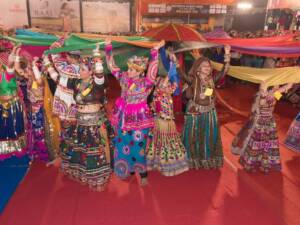 In Northern India, particularly in states like Uttar Pradesh, Punjab, and Delhi, Navratri is celebrated with great zeal. The festivities are marked by vibrant Garba and Dandiya Raas dances, which are performed in large community gatherings. These dances, accompanied by traditional music, involve rhythmic clapping and intricate footwork, creating an energetic atmosphere.
In Northern India, particularly in states like Uttar Pradesh, Punjab, and Delhi, Navratri is celebrated with great zeal. The festivities are marked by vibrant Garba and Dandiya Raas dances, which are performed in large community gatherings. These dances, accompanied by traditional music, involve rhythmic clapping and intricate footwork, creating an energetic atmosphere.
- Delhi and Uttar Pradesh: In Delhi, grand celebrations are organized with elaborate Durga Puja pandals (temporary structures) that showcase intricate decorations and large idols of goddess Durga. The evenings are filled with Garba and Dandiya dances, drawing crowds from all walks of life. In Uttar Pradesh, especially in Varanasi, the festival is marked by religious processions and cultural performances, reflecting the region’s deep-rooted traditions.
- Punjab: In Punjab, Navratri is a time for social gatherings and traditional dances. People dress in colorful attire and participate in energetic Bhangra and Gidda dances. The festival is also an occasion for feasting on traditional Punjabi dishes, adding to the festive spirit.
2. Western India: A Celebration of Dance and Devotion
Western India, including Gujarat and Maharashtra, is renowned for its Navratri celebrations, which are characterized by a blend of dance, music, and devotion. The festival is celebrated with elaborate dance forms, traditional rituals, and community events.
- Gujarat: Gujarat is famous for its Navratri celebrations, which are known for their vibrant Garba and Dandiya Raas dances. The state hosts numerous Garba nights, where people of all ages come together to dance in traditional attire. The dances are performed around a centrally lit diya (lamp), symbolizing the divine presence of goddess Durga. The festival also includes fasting, prayer, and the recitation of religious hymns.
- Maharashtra: In Maharashtra, the festival is marked by a unique blend of traditional and modern elements. In Mumbai and Pune, elaborate Ganesh Chaturthi processions and Durga Puja celebrations are organized. The state also witnesses a variety of cultural programs, including classical music performances and dance shows, reflecting the region’s rich artistic heritage.
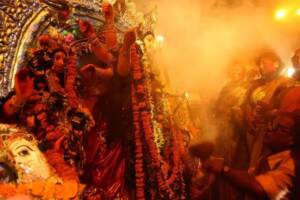 3. Southern India: A Blend of Tradition and Ritual
3. Southern India: A Blend of Tradition and Ritual
In Southern India, Navratri is celebrated with a strong emphasis on religious rituals and traditional practices. The festival is marked by elaborate pujas (prayers), cultural events, and a focus on worshiping the goddess Durga.
- Tamil Nadu: In Tamil Nadu, Navratri is celebrated with a series of rituals, including the display of “Golu” (a traditional arrangement of dolls and figurines depicting various deities and scenes from Hindu mythology). The festival is also an occasion for hosting cultural events such as classical music and dance performances. Families visit temples and engage in devotional practices, reflecting the state’s deep religious roots.
- Karnataka: In Karnataka, particularly in Bangalore, the festival is celebrated with vibrant processions and elaborate decorations. Traditional dance forms such as Yakshagana and classical music performances are integral to the celebrations. The festival also includes fasting and devotional rituals, emphasizing the spiritual significance of Navratri.
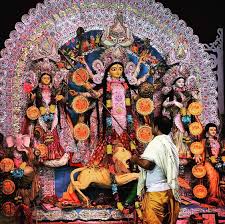 4. Eastern India: A Celebration of Devotion and Culture
4. Eastern India: A Celebration of Devotion and Culture
In Eastern India, especially in West Bengal and Assam, Navratri is celebrated as Durga Puja, which is one of the most significant festivals in the region. The festival is marked by elaborate rituals, artistic displays, and a focus on the worship of goddess Durga.
- West Bengal: In West Bengal, Durga Puja is the highlight of Navratri celebrations. The festival is celebrated with grand processions, intricate pandals, and beautifully crafted idols of goddess Durga. The city of Kolkata comes alive with cultural performances, traditional music, and dance. The final day, known as Vijaya Dashami, is celebrated with the immersion of the Durga idols in rivers or water bodies, symbolizing the goddess’s return to her heavenly abode.
- Assam: In Assam, Navratri is celebrated with the worship of goddess Durga, and the festival is known as Durga Puja. The celebrations include traditional dance forms, music performances, and community feasts. The festival is marked by elaborate rituals and processions, reflecting the region’s cultural and religious heritage.
5. The Diversity of Celebrations in Navratri
Navratri, with its diverse celebrations across India, showcases the country’s rich cultural heritage and religious traditions. From the energetic dance forms in Gujarat and Maharashtra to the elaborate Durga Puja celebrations in West Bengal, the festival reflects a vibrant tapestry of traditions and practices. Despite the regional variations, the core essence of Navratri remains the same—celebrating the divine feminine energy and fostering a sense of community and devotion.
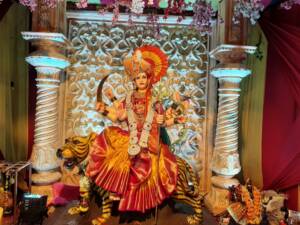 Conclusion
Conclusion
Navratri is a festival that brings together people from different regions of India, each celebrating in their unique way while contributing to the rich cultural mosaic of the country. The festival’s widespread popularity and diverse celebrations highlight the unity in diversity that defines India. Whether through dance, music, religious rituals, or cultural events, Navratri continues to be a vibrant and cherished celebration, uniting people in their reverence for goddess Durga and the spirit of festivity.
